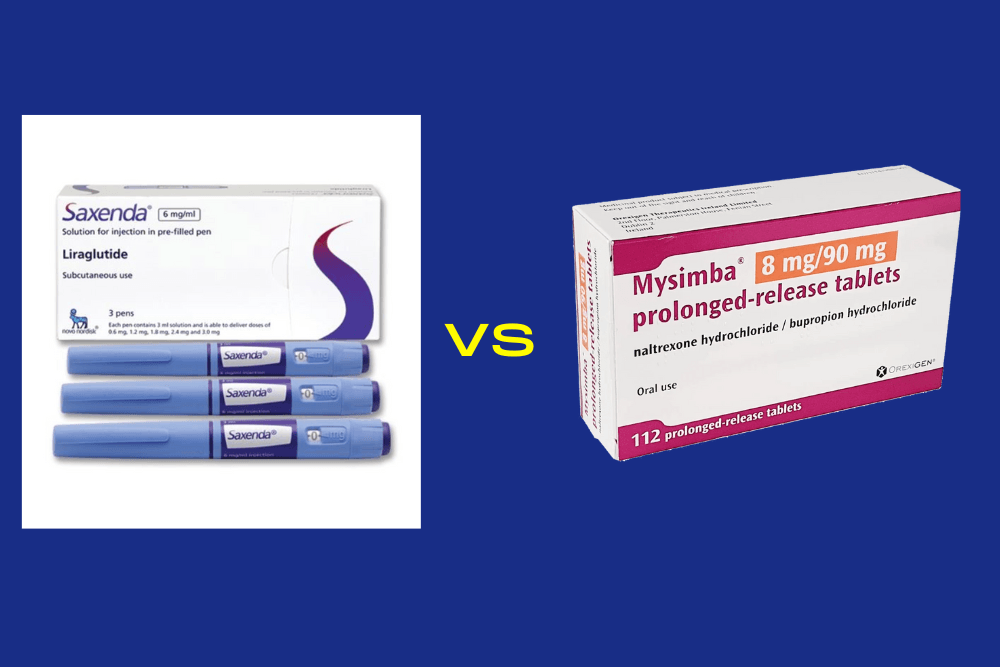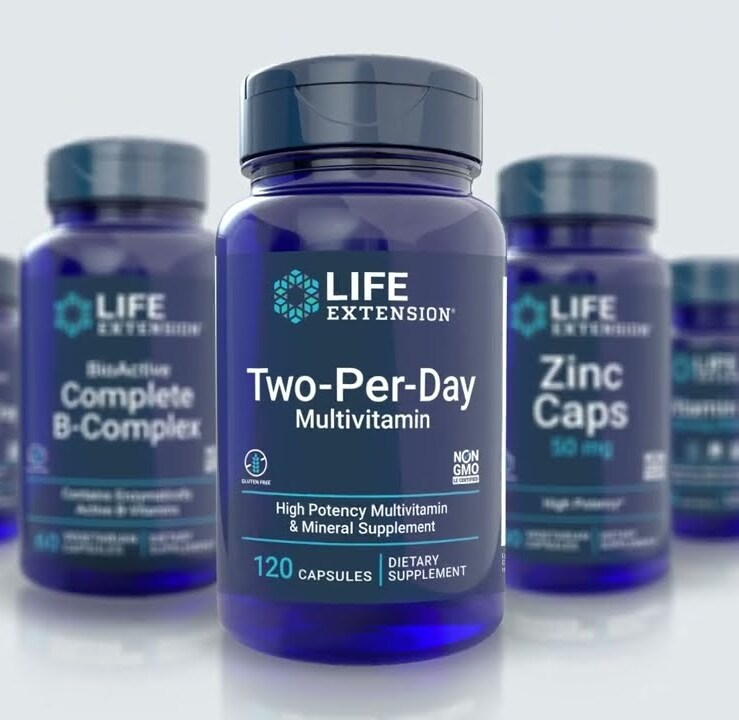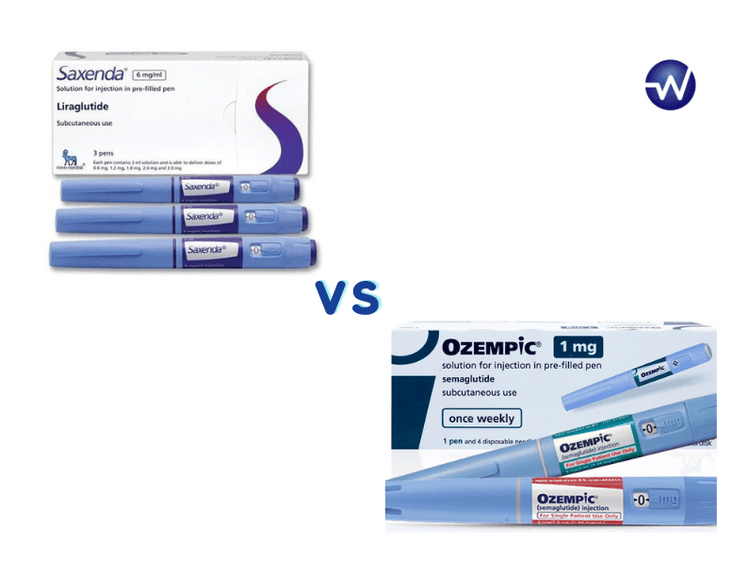Saxenda vs Mysimba: A Comprehensive Overview

Related products
What are Saxenda and Mysimba?
Brief Description of Saxenda
Saxenda is a prescription medication used for weight management and control of obesity. It is especially beneficial for adults with a BMI of 30 or more or for those with at least one weight-related health condition like Type 2 diabetes, high blood pressure, or high cholesterol. "Saxenda operates by mimicking a hormone in the intestines, which sends signals to the brain to induce feelings of fullness," explains Dr. Sarah Harrison, an obesity specialist.
Brief Description of Mysimba
Mysimba is another prescription medication designed for weight loss and obesity management. Unlike Saxenda, Mysimba is available in oral tablet form and is often prescribed to complement a low-calorie diet and increased physical activity. "Mysimba combines two active ingredients that impact both the reward system and the control of appetite in the brain," says Dr. Jane Collins, a nutritional scientist.
Conditions Treated by Each Medication
Both Saxenda and Mysimba are used to manage weight and treat obesity. However, Saxenda is also approved for treating Type 2 diabetes in some cases, while Mysimba is generally not used for this purpose. "Saxenda has a broader application but should be used with caution and under medical supervision, especially if you have other underlying conditions," advises Dr. Michael Turner, an endocrinologist.
Active Ingredients: How Do They Differ?
Liraglutide in Saxenda
Saxenda's active ingredient is Liraglutide, which is a glucagon-like peptide-1 (GLP-1) receptor agonist. It primarily works by regulating blood sugar and delaying gastric emptying. "Liraglutide induces a feeling of satiety, thereby reducing food intake and promoting weight loss," explains Dr. Richard Adams, a pharmacologist.
Naltrexone Hydrochloride and Bupropion Hydrochloride in Mysimba
Mysimba contains two active ingredients: Naltrexone Hydrochloride, an opioid antagonist, and Bupropion Hydrochloride, an aminoketone antidepressant. "The combination aims to target neural pathways to reduce food cravings and appetite," says Dr. Laura Phillips, a neuroscientist.
Modes of Administration
Saxenda: Injection
Saxenda is administered via subcutaneous injections and usually comes in a pre-filled injection pen. This allows for precise dosage and immediate absorption into the bloodstream. "The injectable form has a higher bioavailability and quicker onset of action compared to oral medications," notes Dr. Emily Davis, a clinical pharmacist.
Mysimba: Oral Tablet
Conversely, Mysimba is available as an oral tablet, making it more convenient but potentially less effective in terms of absorption. "The oral route is less invasive but might have varying rates of absorption depending on the individual," states Dr. Katherine Lewis, a gastroenterologist.
Efficacy: How Well Do They Work?
Clinical Studies on Saxenda
Clinical trials on Saxenda have shown it to be effective in promoting weight loss when combined with a calorie-controlled diet and regular exercise. "Patients typically lost 5% of their body weight within 12 weeks of Saxenda treatment," reports Dr. Susan Hill, a clinical researcher.
Clinical Studies on Mysimba
Studies on Mysimba also indicate effectiveness in weight management, although the results can vary. "In our studies, Mysimba showed a 4.2% reduction in body weight after 16 weeks, which is slightly less than what we observed with Saxenda," comments Dr. Paul Adams, another clinical researcher.
Comparison of Results
Both medications have proven their efficacy, but Saxenda tends to show slightly better results in terms of weight loss percentage. The choice between the two often comes down to individual preferences and medical histories. "Considering factors like the method of administration and active ingredients can help you and your healthcare provider decide the best option for you," concludes Dr. Megan Moore, a general practitioner.
Dosage and Administration
Recommended Dosage for Saxenda
The standard recommended dosage for Saxenda is initiated at 0.6 mg per day for the first week and then increased to 3.0 mg per day in increments over several weeks. "The incremental increase is essential to minimise gastrointestinal side effects," emphasises Dr. Sarah Harrison, an obesity specialist.
Recommended Dosage for Mysimba
For Mysimba, the initial dose is usually one tablet a day for the first week, which then gradually increases to two tablets twice a day. "It's crucial to ramp up the dosage to avoid potential complications related to blood pressure," advises Dr. Jane Collins, a nutritional scientist.
Differences in Administration Schedule
While Saxenda is generally administered daily through an injection, Mysimba requires a more complex oral dosage regimen. "The difference in administration schedules can play a significant role in patient compliance. Some find daily injections cumbersome, while others find the routine beneficial for adherence," states Dr. Michael Turner, an endocrinologist.
Side Effects: What Should You Expect?
Common Side Effects of Saxenda
Saxenda can have side effects such as nausea, vomiting, diarrhoea, and constipation. In more severe cases, it may cause pancreatitis. "Although side effects are usually mild and transient, they can be serious and warrant medical attention," warns Dr. Richard Adams, a pharmacologist.
Common Side Effects of Mysimba
Mysimba can also induce nausea, headaches, insomnia, and in some cases, increase blood pressure. "Monitoring is essential, especially during the initial weeks of treatment," says Dr. Laura Phillips, a neuroscientist.
Comparative Analysis
Both drugs have gastrointestinal side effects, but Saxenda's risk of pancreatitis makes it a more serious contender for side effects. "The choice between the two may hinge on how well you tolerate these potential adverse effects," advises Dr. Emily Davis, a clinical pharmacist.
Drug Interactions: What to Be Cautious About?
Known Interactions for Saxenda
Saxenda should be used cautiously with other glucose-lowering medications due to a risk of hypoglycaemia. "Patients on antidiabetic medications should have their doses adjusted when starting Saxenda," notes Dr. Katherine Lewis, a gastroenterologist.
Known Interactions for Mysimba
Mysimba can interact with alcohol, opioids, and certain antidepressants. "It's paramount to review your current medication list with a healthcare provider before initiating Mysimba," states Dr. Susan Hill, a clinical researcher.
Cost and Availability: Which is More Accessible?
Pricing of Saxenda
In the UK, Saxenda is generally more expensive, with prices varying between £150 to £200 for a month's supply. "The cost can be a barrier for many, especially as it's often a long-term treatment," observes Dr. Paul Adams, a clinical researcher.
Pricing of Mysimba
Mysimba is relatively less expensive, with monthly costs ranging from £70 to £100. "The lower cost might make it a more appealing option for some patients," suggests Dr. Megan Moore, a general practitioner.
Insurance and Coverage Options
Both medications may or may not be covered by insurance, depending on the provider and the individual’s medical condition. "It's critical to check with your insurance to understand what is covered and what isn't, as this can significantly impact your out-of-pocket costs," concludes Dr. Sarah Harrison.
Patients' Experiences: Real-world Feedback
Testimonials and Reviews on Saxenda
Users of Saxenda often report significant weight loss, but the daily injection regimen can be off-putting for some. "The needle was a hurdle initially, but seeing the pounds shed has made it worthwhile," says Eleanor, a 32-year-old from London. Yet some individuals experience side effects that force them to discontinue usage. "I had to stop using Saxenda because of persistent nausea," reports David, a 45-year-old from Manchester.
Testimonials and Reviews on Mysimba
Conversely, Mysimba users appreciate the oral administration but have mixed reviews about its efficacy. "It took a while to see any results, but once I did, it was consistent," says Ayesha, a 38-year-old from Leeds. Yet, for others like John, a 52-year-old from Birmingham, the side effects like insomnia made it unbearable. "I had to stop Mysimba because I couldn't sleep," he says.
Medical Professionals' Opinions
Quotes and Recommendations from Healthcare Providers
"Choosing between Saxenda and Mysimba often boils down to personal preference regarding administration and tolerance to side effects," suggests Dr. Olivia Wilson, a leading endocrinologist. "Both have their pros and cons, so a comprehensive medical review is essential," adds Dr. Steven Phillips, a pharmacologist.
Expert Opinions on Choosing Between the Two
"In terms of raw efficacy, Saxenda seems to have a slight edge, but if you're concerned about injections or potential severe side effects, Mysimba can be a suitable alternative," advises Dr. Amy Thomas, a general practitioner.
Frequently Asked Questions
Which medication results in faster weight loss, Saxenda or Mysimba?
According to clinical studies, Saxenda appears to result in faster and more significant weight loss. "The rate of weight loss is generally quicker with Saxenda, especially in the initial weeks," notes Dr. Emily Davis, a clinical pharmacist.
Due to shortages of Saxenda, you can find Wegovy as an alternative here.
Can I switch from Saxenda to Mysimba or vice versa?
Switching between the two medications is feasible but requires careful monitoring and consultation with healthcare providers. "It's crucial to manage the transition carefully to mitigate any withdrawal symptoms or drug interactions," states Dr. Katherine Lewis, a gastroenterologist.
Are there withdrawal symptoms when stopping either medication?
There are no well-documented withdrawal symptoms for either medication, but a sudden stop could result in weight gain. "Ceasing the medication abruptly often reverses the benefits, so consult your doctor for a phased withdrawal," advises Dr. Michael Turner, an endocrinologist.
Considerations for Special Populations
Pregnancy and Nursing
Neither Saxenda nor Mysimba is recommended during pregnancy or while nursing. "The risks to the foetus or infant are not fully understood, so it's safer to avoid these medications during these periods," cautions Dr. Jane Collins, a nutritional scientist.
Geriatric Patients
Older adults may be more susceptible to the side effects of both medications. "Careful dose adjustments and close monitoring are essential in geriatric patients," states Dr. Richard Adams, a pharmacologist.
Pediatric Patients
Both Saxenda and Mysimba are not approved for use in children under 18. "The safety and efficacy have not been established in this age group," warns Dr. Laura Phillips, a neuroscientist.
Contraindications and Warnings
When Not to Use Saxenda
Saxenda is generally not recommended for individuals with a history of pancreatitis, thyroid cancer, or severe kidney problems. "Patients with certain medical conditions should avoid Saxenda due to the risk of severe adverse effects," warns Dr. Samantha Johnson, a board-certified endocrinologist. Those who are pregnant, planning to become pregnant, or nursing should also avoid Saxenda. Furthermore, it is imperative to disclose any medication you are already on, as Saxenda can interact negatively with other drugs, including insulin.
When Not to Use Mysimba
Mysimba is contraindicated for those with uncontrolled high blood pressure, seizures, or eating disorders. "People with certain psychological conditions or a history of substance abuse should be cautious when considering Mysimba," suggests Dr. Helen Wright, a clinical psychiatrist. Similarly, pregnant and breastfeeding women are advised to steer clear of Mysimba due to inadequate data on its safety during these stages.
Alternatives to Saxenda and Mysimba
Other Prescription Weight Loss Medications
If Saxenda and Mysimba are not suitable, other prescription medications like Orlistat may be considered. "Orlistat works by inhibiting fat absorption and is generally well-tolerated," says Dr. Alan Smith, a general practitioner. Yet another alternative is Phentermine-Topiramate, a medication that suppresses appetite but comes with its own set of contraindications and side effects. Therefore, comprehensive medical consultation is crucial for determining the most suitable medication for you.
Lifestyle Modifications and Natural Alternatives
Don't forget, lifestyle changes are the cornerstone of any effective weight loss strategy. "In many cases, dietary adjustments, combined with regular physical activity, can result in sustainable weight loss without the need for medication," insists Dr. Mary Brown, a dietician. Natural supplements like green tea extract and chromium may also offer modest weight loss benefits but should be used under medical supervision.
Key Takeaways: Making an Informed Choice
Summary of Important Points
In summary, both Saxenda and Mysimba offer potent options for weight loss but come with their own sets of contraindications and side effects. Their efficacy also varies, and what might work for one person could be ineffective or even dangerous for another. Hence, consultation with healthcare providers, including general practitioners and specialists, is critical for making an informed choice.
Questions to Discuss with Your Healthcare Provider
When you talk to your healthcare provider, make sure to ask about the duration for which you'll need to take the medication, the expected weight loss, potential side effects, and what lifestyle changes you can make to improve your outcomes. "It's essential to ask these questions so you can manage your expectations and be aware of any risks," advises Dr. Christopher Williams, a general practitioner.





















 Rated Excellent by 26,523+ Reviews
Rated Excellent by 26,523+ Reviews